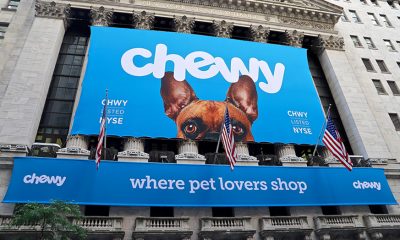Beauty & Cosmetics
How Can Private Brands Thrive in a Post-COVID 19 World?
One thing is certain — this is no time to sit on the sidelines.
Published
4 years agoon
By
BXP ReaderHow can private brands thrive in a post-Covid 19 world?
While at first glance the Covid-19 outbreak may appear to be a great leveler, challenging goods and services providers of all sizes to come to grips with immense shifts and fast-moving changes, the ensuing recovery period stands to be anything but uniform. Across the FMCG sphere, the approaches and standards are likely to vary widly. But one thing is clear: this is no time to sit on the sidelines.
For an effective transition in to a post-crisis marketplace, brands must keep a proactive mindset, stay agile, and remain focused on future growth. In a previous blog, we’ve discussed the need for brands to build on their footprint, align their messaging to current consumer needs and to establish a continuous process of research and adjustment in line with ongoing shifts in the economy and consumer value perception.

Matt Caldwell of Equator Design.
In crucial ways this year’s economic downturn is vastly different from the one we experienced a decade ago. Today, amid easing lockdowns in many areas, a large percentage of consumers plan to continue to take precautionary measures against spreading Covid-19. Since this includes consumers staying closer to home, convenience stores are likely to play a larger role in providing essential fresh and pantry items, as well as household cleaning and hygiene products. Data research firm Nielsen have predicted that the longer the current reality remains, the more likely it is that consumers will maintain their recently adopted behaviors for the longer term. Convenience stores, therefore, may modify their offering to align with emerging trends by widening it to include a more diverse assortment of needs – fresh meat, eggs, toilet paper, butter and dish soap, to name a few.
Meanwhile, some experts speculate that the psychological impact of the Covid-19 pandemic is likely to trigger socio-cultural shifts which mimic those that followed the Great Depression of the 1930s, a recession which inspired widespread savings and reinforced thriftiness among the general public.
As consumers grow thriftier and remain cautious about visiting restaurants, attending sporting events, taking in a show or boarding a flight or cruise, they will be receptive to the diversion and excitement to be found in sampling new food and drink products – leaning on trusted local supermarkets to deliver those fulfilling experiences.
AdvertisementSo what does this mean for FMCG?
Creating sustainable and profitable growth will be more challenging than ever before, but FMCG retailers – in particular those who have gone above and beyond for consumers through the peak of the pandemic – will benefit from a strong position as lockdowns ease.
Having grown well used to the retailers’ existing offering over previous months, consumers will be keeping an eye out for novel flavors, ranges, meal additions and “treat” items, thus this is the ideal time for supermarkets to drive new product development.
In expanding to meet the needs of consumers brands can demonstrate meaningful differentiation; in other words show that you are working to enrich consumers’ lives – and prove that you are different from the competition. The ability to show meaningful difference is still the strongest indicator of long-term brand value growth, thus it’s vital to communicate this through consistent brand messaging around your brand’s purpose and its innovations, as well as the value and experience you deliver to consumers.
Pivoting to digital
The switch to digital formats in work and social spheres is happening in real time, so it should come as no surprise that consumer shopping behaviors are already following suit, triggering a long-term shift in the realm of ecommerce.
Data consultancy Kantar recently revealed that the share of people who complete 50% or more of their shopping online has grown by between 25-80% since the Covid-19 outbreak picked up speed, while six in 10 consumers intend to keep buying as much online once the pandemic has abated as they do now.
The reasons we are shopping online, as well as the ways we are doing it, are changing. A survey from bauermedia.com indicates that while 56% of consumers are most likely to shop out of necessity, consumers have a variety of motivations:
Advertisement- 34% buy to make life easier
- 30% buy to entertain
- 27% buy as a reward for themselves
- 20% buy out of boredom
Respondents also stated that ease of purchase, availability, company reputation, and speed of delivery were major factors which swayed buying decisions.
Creating an online experience which satisfies consumers’ need for entertainment and reward should be a focus for all brands, but particularly those in the private brand sector, where players have trailed behind national brands in establishing comprehensive ecommerce strategies.
Private brands and the recovery era
Private brands have a historical precedent of solid performance during economic downturns. However, consumers do not want to feel as though they are having to sacrifice on quality or are being forced to shop with a certain retailer. In this environment private brands delivering a feeling of choice, normalcy and high quality will inspire customers to shop a certain private brand because they want to, not because they have to.
Currently, private brands are in a better position than ever to harness public mood and to leverage the full capabilities of their digital platforms for improved consumer loyalty.
In a post-Covid 19 world, a strong ecommerce strategy involves the use of innovative content in support of compelling onpack design – such as video, complementary product suggestions, recipes, lifestyle photography, and in app rewards – which encourage consumers to engage with the brand. To turn visitor clicks into conversions, make your private brand ecommerce:
- Easy to navigate
- Tell the brand story
- Be consistent in look and feel
- Show product in use
- Communicate the benefit(s)
- Deliver on the brand promise
- Show the whole offering
In these ways it’s possible to guide consumers to the products which suit their lifestyles, budgets and dietary needs, transforming the basic online shop into a meaningful consumer experience.
AdvertisementThe act of crafting the online journey of the consumer from start to finish means better long-term brand equity for private brands – as well as improved resilience in the face of unstable economies which are staggering back to previous levels.
A brand’s post-Covid outcome will depend on its ability to drive forward, rather than taking a “wait and see” approach. Those will be the brands that stand to thrive, not just survive.

SPONSORED VIDEO
Branding with Ferocity – Thinking Like an Indie Brand
Get a better understanding on how to leverage new technologies to engage and delight shoppers, sustainability’s role in product and package design – being sustainable and premium are not mutually exclusive, plus best practices and tips for collaboration and how to launch new products and refresh existing product line-ups and brands.
You may like
Advertisement
Subscribe

BULLETINS
Get the most important news and business
ideas from BXP Magazine's news bulletin.
Advertisement













